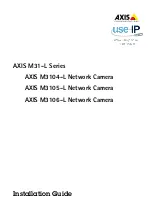
pulsAR
radio Operator's Manual
Receive Signal Strength
The signal is much weakened when it reaches the receiving antenna. That antenna will give it a
boost, measured by the antenna gain in dBi. The signal is then attenuated as it propagates down the
RF coaxial cable that connects that antenna to the radio. The Receive Signal Strength (RSS)
parameter refers to the strength of the signal that finally arrives at the RF connector of the receiving
radio at site 2. With all the gains and losses measured in dB, this receive signal strength is computed
with the following expression:
RSS = TxPower – Cabl AntGain1 – FSL + AntGain2 – CableLoss2
The RF Link Budget calculator always computes and displays this value in the output panel.
Receive Sensitivity
The radio Receiver Sensitivity is the receive-signal-strength at the input of the radio at which point its
"Bit Error Rate (BER)" is at a specified value. Most manufacturers, including Afar, use a BER of
1x10
-6
(1 bit error in one million bits) to specify the radio receiver sensitivity. However make sure
you check the specifications when comparing the sensitivity in radios from different manufacturers.
You can configure the
pulsAR
radio to operate at four different RF speeds. Lower speeds give you a
better receiver sensitivity. Appendix B lists the sensitivity for the various models and at the different
RF speeds. Use the correct sensitivity value from the radio specification
Fade Margin
The Fade Margin is the difference between the Received Signal Strength and the radio Receiver
Sensitivity. When you deploy a link you want to have a Receive Signal Strength that is sufficiently
above the radio Receiver Sensitivity in order to survive signal fading due to a variety of factors.
These factors might include slight misalignment of the antennas, losses due to fog and rain, etc. As a
rule of thumb you should try to get at least 15 dB of fade margin in your links.
With the calculator you can select whether to compute the Distance, the Fade Margin or the Transmit
Power. All these parameters are inter-related as described above. When you select one parameter to
compute, its value in the input panel is disabled.
All the input values are controlled with “spinners”. As you change any input the calculator instantly
updates the output values. By seeing the results immediately you can quickly evaluate trade-offs
between different parameters.
6-8
Summary of Contents for AR-24010E
Page 2: ......
Page 74: ...pulsAR radio Operator s Manual 4 26 ...
Page 96: ...pulsAR radio Operator s Manual B 2 ...
















































